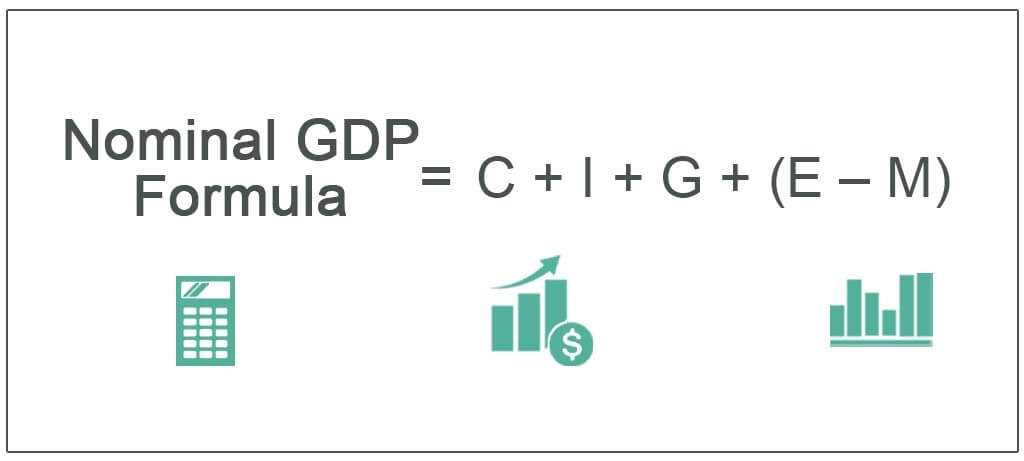What is Nominal Gross Domestic Product?
Nominal Gross Domestic Product (GDP) is a measure of the total value of all final goods and services produced within a country’s borders during a specific time period, usually a year. It represents the monetary value of the output of an economy and is often used as an indicator of economic performance.
The term “nominal” refers to the fact that GDP is measured in current prices, without adjusting for inflation. It includes the effects of price changes, so an increase in nominal GDP can be due to either an increase in production or an increase in prices.
Nominal GDP takes into account all goods and services produced within a country, regardless of whether they are consumed domestically or exported. It includes both private consumption, government spending, investment, and net exports (exports minus imports).
Nominal GDP is an important economic indicator as it provides a snapshot of the size and growth rate of an economy. It is used by policymakers, investors, and analysts to assess the overall health of an economy and make informed decisions.
Importance of Nominal Gross Domestic Product
Nominal Gross Domestic Product (GDP) is a crucial economic indicator that measures the total value of goods and services produced within a country’s borders during a specific time period. It provides valuable insights into the overall health and performance of an economy.
Here are some key reasons why nominal GDP is important:
- Economic Growth: Nominal GDP helps to measure and track the growth rate of an economy over time. By comparing the nominal GDP figures from different periods, policymakers, economists, and investors can assess whether an economy is expanding or contracting. This information is essential for making informed decisions regarding investments, fiscal policies, and monetary policies.
- Business Investment: Nominal GDP serves as a useful tool for businesses to evaluate market potential and make investment decisions. A higher nominal GDP indicates a larger market size and increased consumer demand, which can attract both domestic and foreign investments. Businesses can use this information to identify growth opportunities, expand their operations, and allocate resources effectively.
- Employment: Nominal GDP is closely linked to employment levels. When the economy is growing, businesses tend to hire more workers to meet the increased demand for goods and services. By analyzing the nominal GDP data, policymakers and labor market analysts can gain insights into the overall employment situation and make informed decisions regarding labor market policies.
- Inflation: Nominal GDP helps to measure the overall price level in an economy. When nominal GDP increases at a faster rate than the population growth, it indicates inflationary pressures. This information is crucial for central banks and policymakers to implement appropriate monetary policies to control inflation and maintain price stability.
- International Comparisons: Nominal GDP allows for comparisons between different countries’ economies. It provides a common metric to assess the relative size and performance of economies on a global scale. This information is essential for policymakers, investors, and international organizations to make informed decisions regarding trade, investment, and development strategies.
Calculation of Nominal Gross Domestic Product
The calculation of nominal gross domestic product (GDP) is a key indicator used to measure the economic performance of a country. It represents the total value of all final goods and services produced within a country’s borders during a specific time period, usually a year.
To calculate nominal GDP, three main components are considered:
| Component | Definition |
|---|---|
| Consumer spending (C) | The total expenditure by households on goods and services, such as food, clothing, housing, and healthcare. |
| Investment (I) | The total expenditure by businesses on capital goods, such as machinery, equipment, and buildings, as well as changes in inventories. |
| Government spending (G) | The total expenditure by the government on goods and services, including salaries of public employees, infrastructure projects, and defense. |
| Net exports (NX) | The difference between a country’s exports and imports of goods and services. |
The formula for calculating nominal GDP is:
GDP = C + I + G + NX
Limitations of Nominal Gross Domestic Product
Nominal Gross Domestic Product (GDP) is a widely used economic indicator that measures the total value of all goods and services produced within a country’s borders during a specific period. While it provides valuable insights into the overall health of an economy, it also has several limitations that should be taken into consideration when interpreting the data.
1. Inflation
2. Changes in Price Levels
Nominal GDP does not account for changes in price levels, which can vary significantly across different industries and regions. This means that it may not accurately reflect the relative importance of different sectors or the distribution of economic activity. For example, if the price of oil increases significantly, the nominal GDP of oil-producing countries may increase even if the actual level of production remains the same.
3. Exclusion of Non-Market Activities
4. Quality of Goods and Services
Nominal GDP does not consider changes in the quality of goods and services over time. For example, if the price of a computer remains the same, but its performance and features improve, the nominal GDP may not reflect the increase in value. This limitation is particularly relevant in industries with rapid technological advancements.
5. Income Distribution
6. Externalities and Environmental Impact
Nominal GDP does not account for externalities, which are the unintended consequences of economic activities. For example, it does not consider the negative environmental impact of production or the social costs associated with pollution. This limitation can lead to an overestimation of economic welfare and sustainability.
Despite these limitations, nominal GDP remains a valuable tool for measuring economic activity and comparing the size of different economies. However, it should be used in conjunction with other indicators and adjusted for inflation and other factors to provide a more accurate assessment of economic performance.
Comparing Nominal and Real Gross Domestic Product
When analyzing the overall health and performance of an economy, it is essential to consider both nominal and real gross domestic product (GDP). While nominal GDP represents the total value of goods and services produced within a country’s borders, real GDP takes into account changes in prices over time, providing a more accurate measure of economic growth.
The Difference Between Nominal and Real GDP

Nominal GDP is calculated using current market prices, without adjusting for inflation. It reflects the value of goods and services produced in a given year, including any price changes that may have occurred. However, this measure can be misleading because it does not account for changes in the overall price level.
On the other hand, real GDP adjusts for inflation by using constant prices from a base year. By removing the impact of price changes, real GDP allows for a more accurate comparison of economic output over time. It provides a clearer picture of whether an economy is growing or contracting, as it focuses solely on changes in the quantity of goods and services produced.
The Importance of Comparing Nominal and Real GDP
Comparing nominal and real GDP allows economists and policymakers to assess the impact of inflation on economic growth. If nominal GDP is growing at a faster rate than real GDP, it suggests that inflation is occurring. This can have implications for the purchasing power of consumers, as rising prices erode the value of money.
Limitations of Comparing Nominal and Real GDP

While comparing nominal and real GDP provides valuable insights into the state of an economy, it is important to recognize its limitations. One limitation is that real GDP relies on accurate and up-to-date price data, which can be challenging to obtain. Additionally, the choice of base year can affect the calculation of real GDP, as different base years may yield different results.

Emily Bibb simplifies finance through bestselling books and articles, bridging complex concepts for everyday understanding. Engaging audiences via social media, she shares insights for financial success. Active in seminars and philanthropy, Bibb aims to create a more financially informed society, driven by her passion for empowering others.
